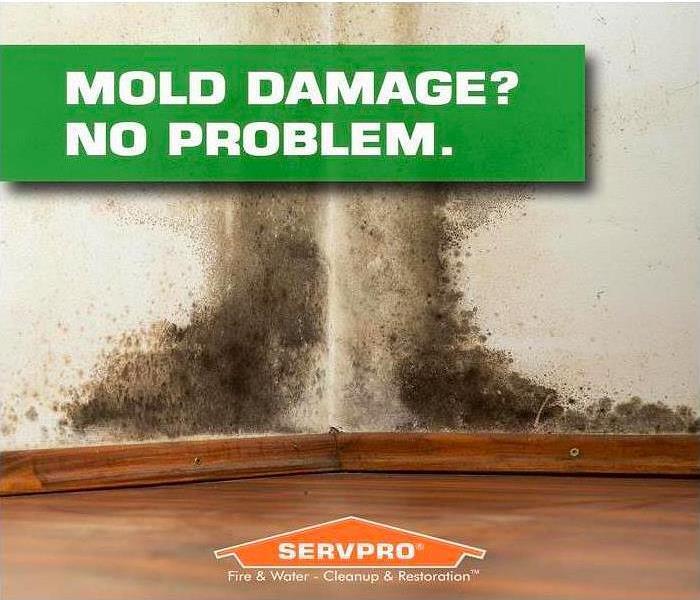Toxic Mold in Commercial and Residential Buildings
3/12/2018 (Permalink)
Home and Business Mold and Water Damage
Mold is multicellular fungi such as Penicillium colonies and other thread-like growths known as hyphae. Single cell fungus is known as yeasts. Some mold organisms provide useful benefits such as found in bread and yogurt, antibiotics and various enzymes. However, as the SERVPRO of North Shasta, Trinity & Greater Tehama Counties technicians encounter on a routine basis in the moist walls and dark crawl spaces of Redding commercial and residential properties, mold is a very toxic growth to the wellbeing, air quality and health of tenants, owners and occupants.
In fact mold outbreaks particularly within commercial office buildings have increased as a response to the 1970’s energy crisis because of the new building codes aimed at conserving energy and thus making spaces more airtight. There is much to be said for healthy outside air and balanced cross-ventilation. The term “sick building syndrome” is derived from these air quality concerns in modern air conditioning and building construction. SERVPRO’s vast experience in mold mitigation inside Redding and Shasta County commercial and residential structures supports that conclusion.
Mold species number in the thousands. Six are considered to be the most virulent and common toxic molds outbreaks found in buildings: Aspergillus, Fusarium, Paecilomyces, Penicillium, Stachybotrys and Trichoderma. The associated links provide more information.
Damp building materials caused by a burst water pipe or by a leaking roof after a rain storm retain moisture and water initiating the growth of dormant microbes. Home and offices, although under routine circumstances appear to be healthy and mold-free, contain all forms of highly destructive fungus. One in particular, Dry Rot Fungus (Serpula lacrymans) is found in older water damaged buildings that have repeatedly experienced the wet-dry-wet cycle. Surprisingly, this type of mold is generally undetected by typical mold inspections. This dry rot bores into wood structural supports and flooring allowing it’s root system, the mycelium, to deeply embed into masonry and grow into inner wood panels.
Mold feeds on carpet, paper, clothes, leather, drywall, wood, insulation and food by breaking down organic matter and requires moisture. Everyday household activities of washing, cooking and winter cold weather condensation create water vapor and increased humidity inside poorly ventilated living and work spaces. Certainly, plumbing and corroded toilet pipes break at unexpected moments and produce large, sometimes unseen, pools of standing water.
As a SERVPRO Franchise we have access to the latest mold damage mitigation and restoration technologies, containment and training to effectively deal with any moisture and fungus issue.
Call us 24 / 7 / 365 at (530) 222-0200.






 24/7 Emergency Service
24/7 Emergency Service
